MK from Capranova Tatyana.
This master class I, first of all, address Mama Todddlers and teachers engaged in young children. I also tried to make the most detailed description of the process so that the ball could sew children or adults who take a needle with a thread not so often and even more so are not familiar with patchwork technique.
On the creation of a master class I was inspired by the wonderful book of Galina Dyan "Patchwork balls", but how to build a pattern for a sixkinal ball, I never understood. I had to act as a selection method. After a couple of unsuccessful attempts, I still came to the result of me. My one year old with a small daughter was also very pleased with the result. She loved to play balls, throws them, rolling, looking at. Balls can be erased in the car, which is important. I prepared for a master class two balls, one sewed manually, the other on the typewriter. I want to share the manufacturing process.
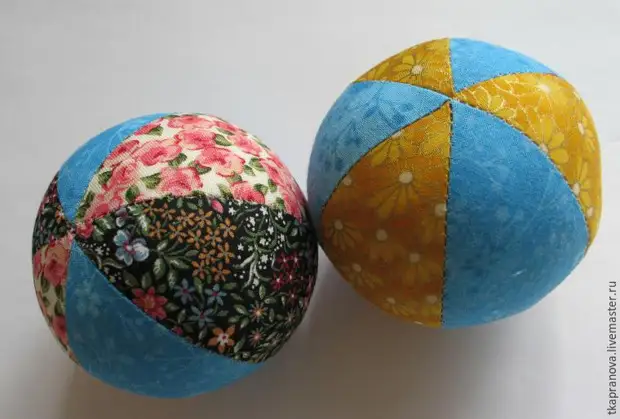
The diameter is about 8 cm that a little more than the tennis Arab ball.
Materials will need a dense tissue type of biazi or cotton for a patchwork, holofiber filler "balls", a container from Bakhill, a few beads, threads.
Actually, the fabric can fit almost any, I used both the cloak, and the fleece, it turned out well. The factory so that the material holds the shape, did not very much. Instead of hollofiber "Balls" you can use the ringed synthetic hybecue or batting, you can finely cut the pantyhose. But it is the "balls" best suited for packing, besides, this material is hypoallergen.
Containers from Bakhill usually accumulate in pockets after visiting medical institutions, but you can buy a ready-made "godrel" for soft toys or make it yourself of two caps from plastic bottles. To do this, take two covers, put in one somewhat beads, cover the second and tightly windscreen.
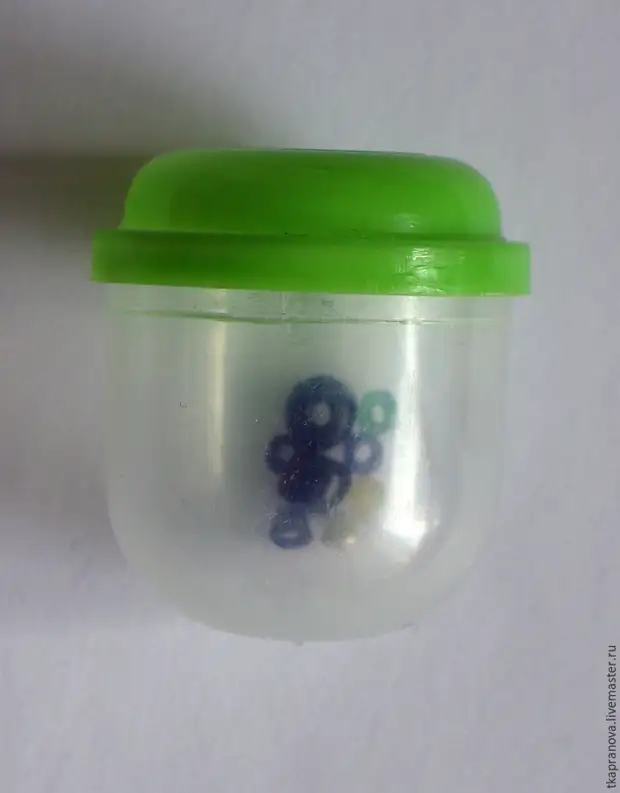
Progress.
Decide with the cloth. You can make a ball monophonic, from two, three colors or six.
Take the usual notebook leaf in the cell and draw the pattern of the creek for the ball according to the scheme. On cells it is easy to do.
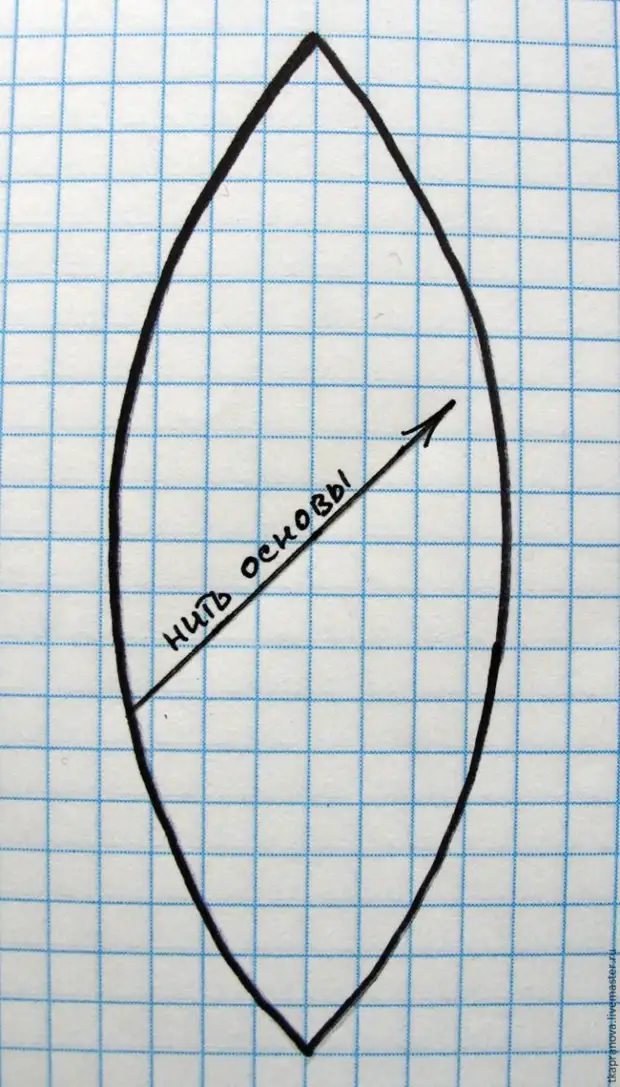
On the cloth of the clins, you need to put the "defect", the filament of the base, that is, the share must pass, as shown on the pattern. It is very important. Even if you chose knitwear, place the clins at an angle of 45 degrees relative to the edge of the tissue.
We make a stock on seam 0.5-0.7 cm. Circuit the pattern and cut the part taking into account the reserve on the seam. I drank the usual simple pencil. If your ball is two-color, then three parts need to carve them alone fabric, three from the other. If a tricolor, then two parts from each tissue, etc.
Next - two ways to sewing.
Option 1. We sew manually.
I made this ball from three different pictures and fabric color.
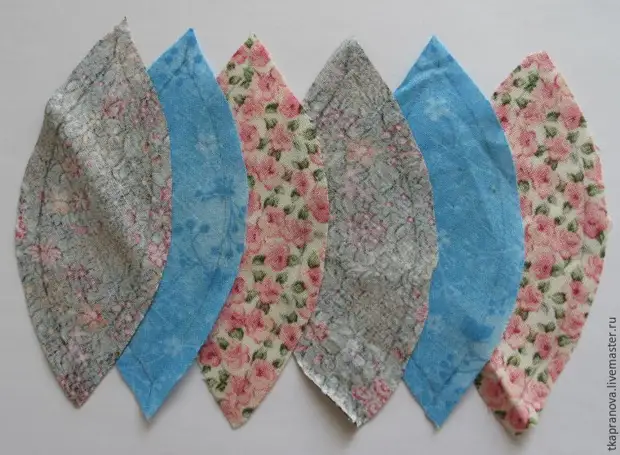
I cut the clins and immediately lay them out on the table in order, how they will be located in the finished ball.
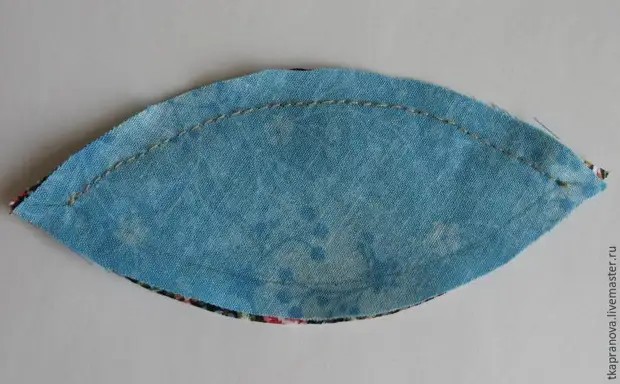
We take two extreme ones on the left and sew them with a screen "back needle" from one vertex part to another.
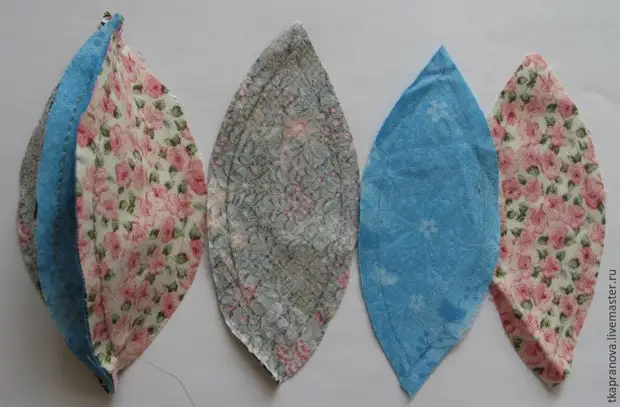
Attach the following item in the same way.
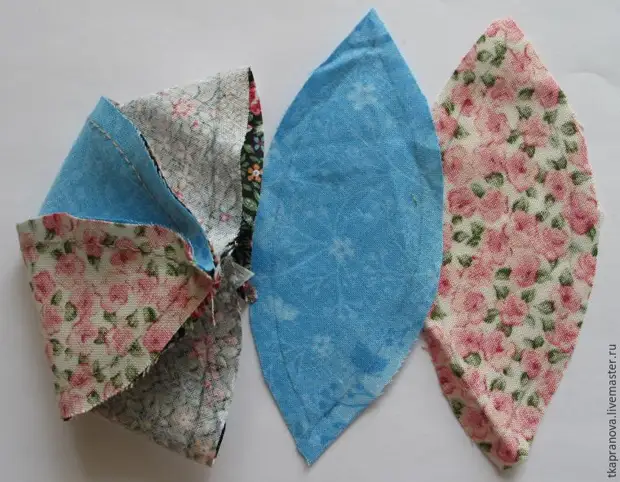
And the next until all six wedges are sewn. Leave an uncomfortable hole for turning and packing, it is half one of the sides, as shown in the photo below.
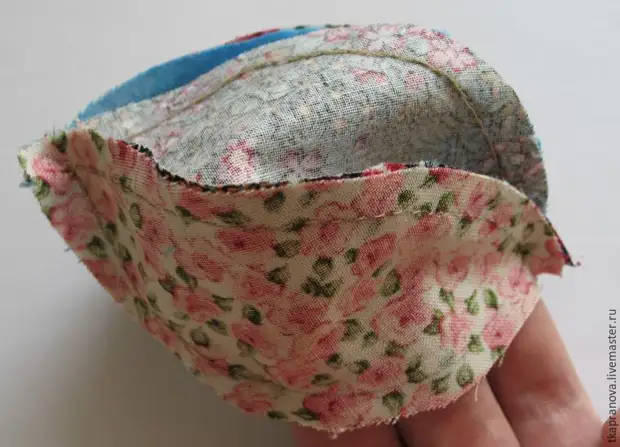
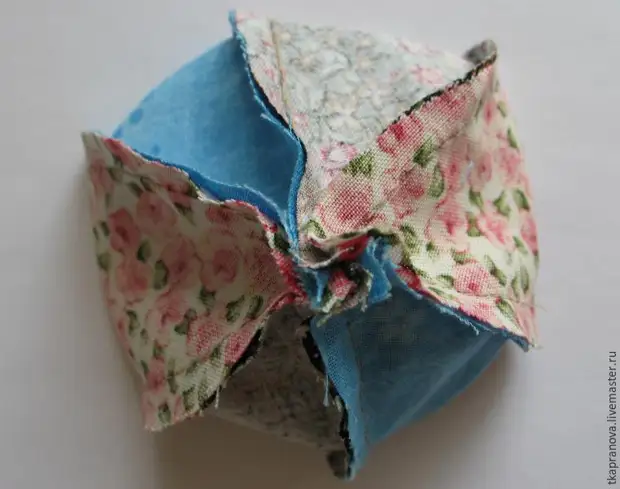
Now the ball blank can be turned on the front side.
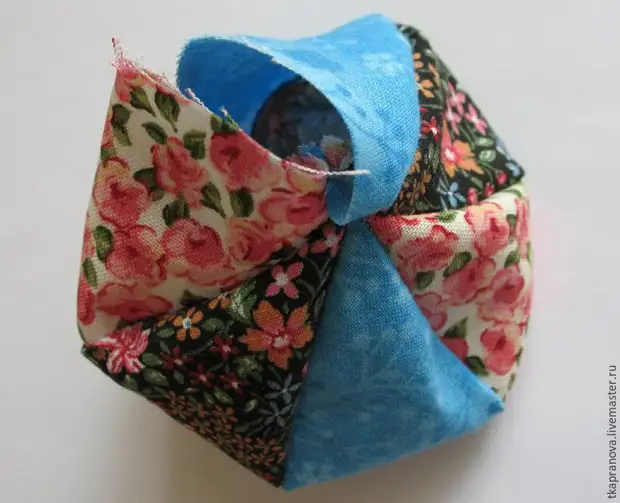
Put our ball to half.
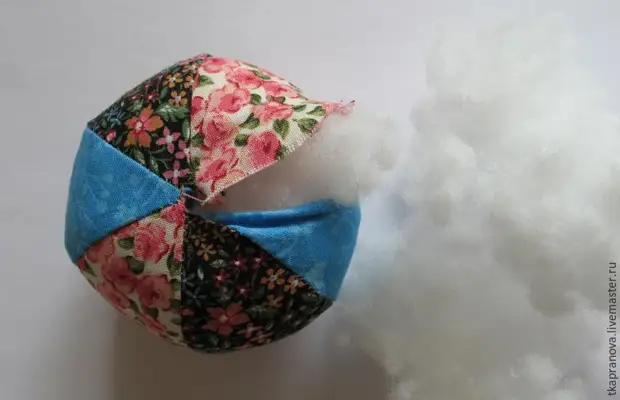
Then to put inward "Gremelka" - I have this container from under the Bakhill with beads - and score the ball completely. Moreover, part of the packing should look out of the hole, as if to fall out. We then reflect it in the process of sewing holes.
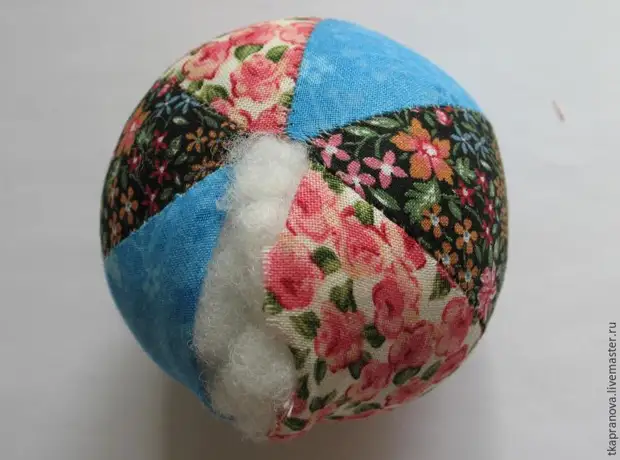
Now subjugate inwards on the souls along the sides of the hole and, by squeezing the ball with his hand, so that the edges of the hole come together, squeeze it with a secret seam, refueling the packing inside.
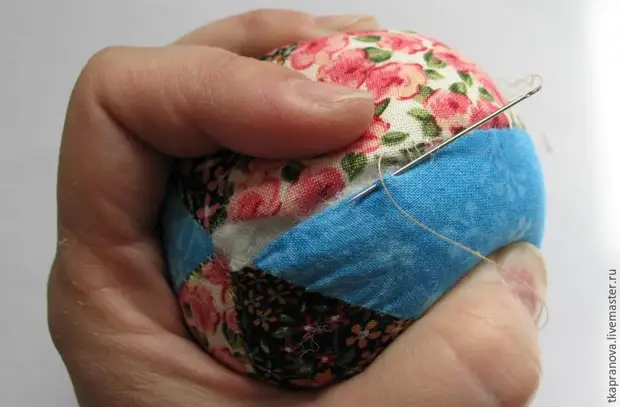
Connect into one point of the clina on the top of the ball, if they diverged.
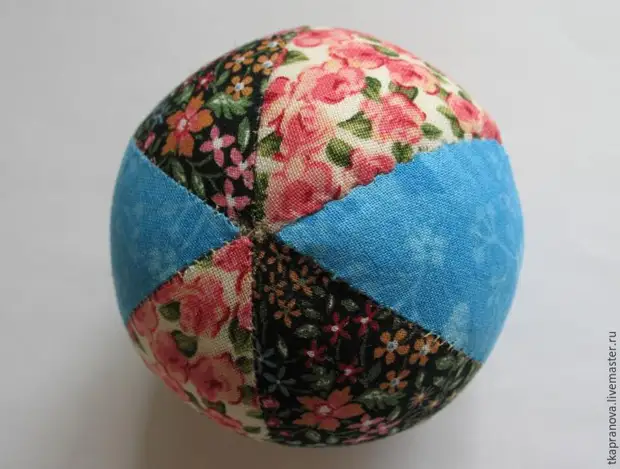
Option 2. We sew the details on the sewing machine.
I made this ball, I got three details from the yellow fabric, three from the blue and laid them on the table in two handhes: yellow-blue-yellow and blue-yellow blue. I took only one photo, I forgot the second.
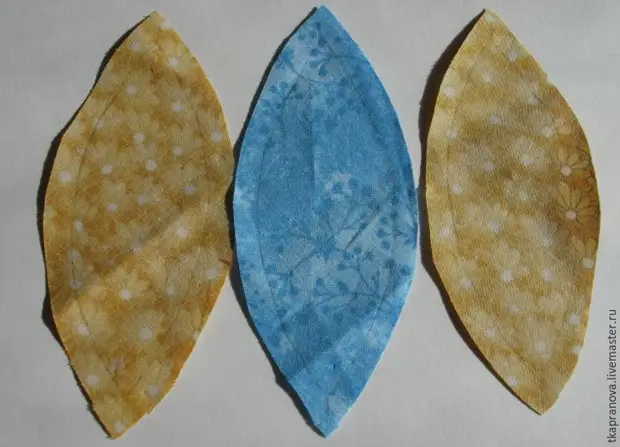
Solol pins and have two clins of different colors. When I did another ball, from the fleece and flax, the details first leaned. Do not be lazy, sweep if you work with knitwear or rarely sit for the machine. So it turns out more careful. Stead the details, as in the photo below: from the edge of the cut to the edge. At the ends of the seams make the leaf, 2-3 stitches.
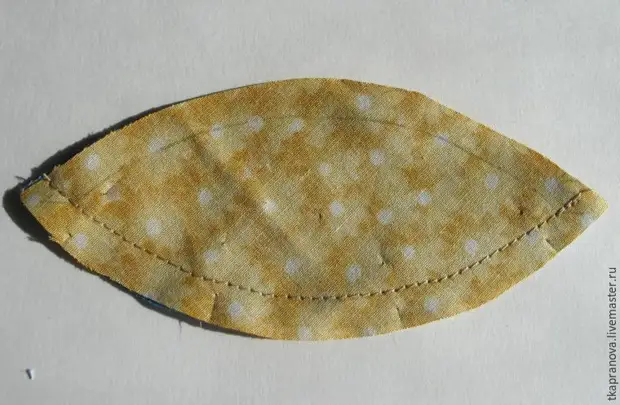
We rinse another clins and steady. Power - in the irip.
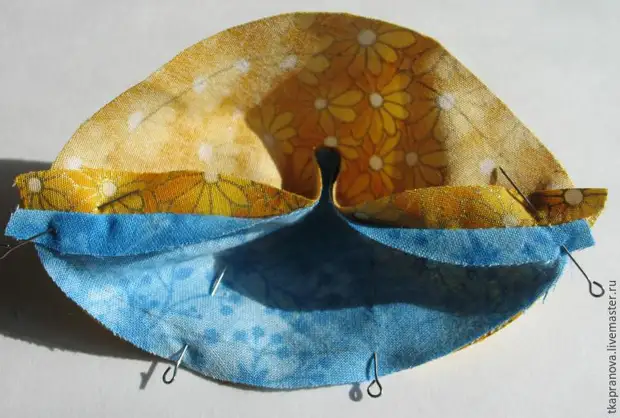
After we got a blank of three wedges, lay it away and similar samples we make the second workpiece. We are ready for two halves of the ball.
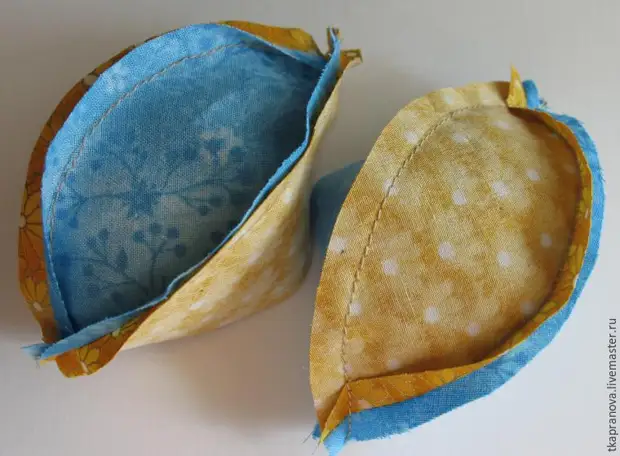
Turn one of the halves on the front side.
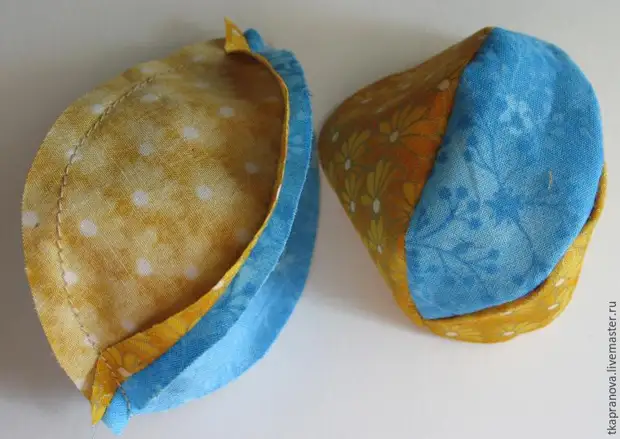
Insert one half to another, we roll pins or lean, neatly combining the tops of the halves.
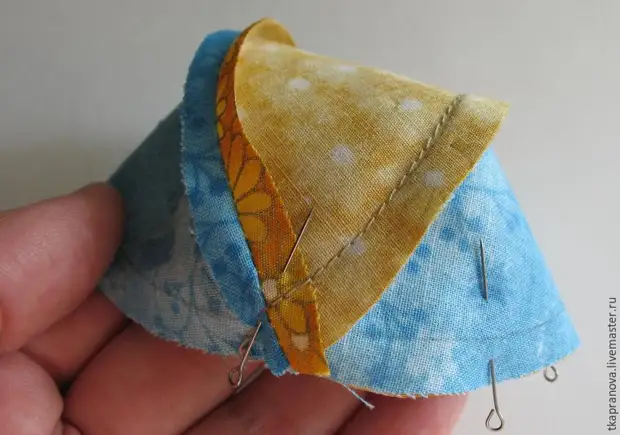
Step two halves of the ball, leaving an unimpressed area on one of the sides.
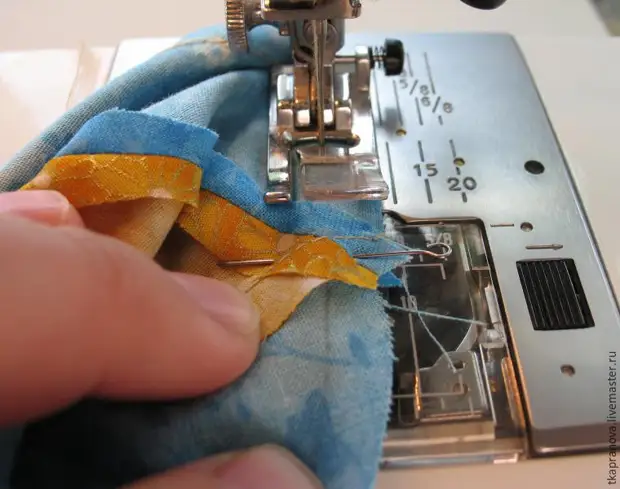
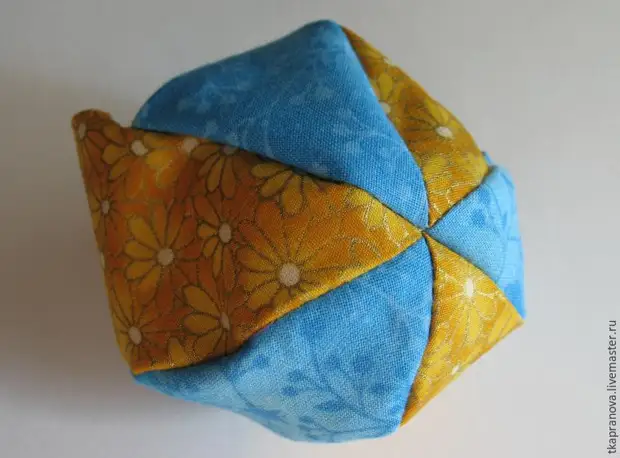
Turn the ball. If you did everything neatly, then a smooth vertex is obtained.
Then we fee into the ingestion of the seams on the seam and we sew the hole with the secret seam, squeezing the ball in the hand, so that the edges of the hole come together.
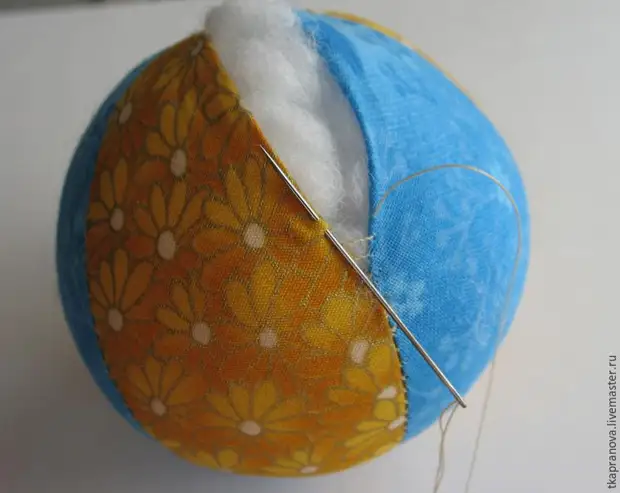
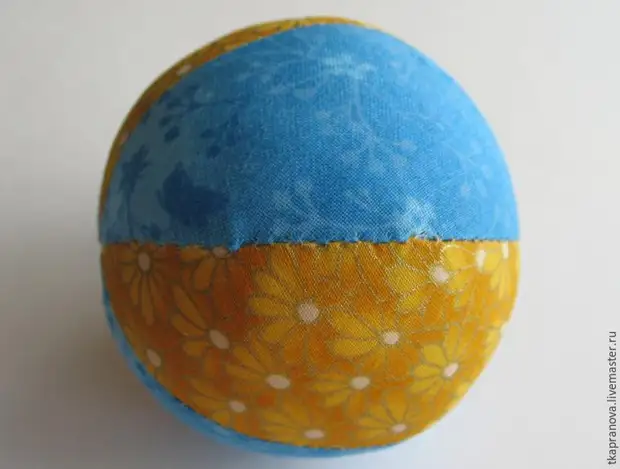
The ball is ready.
You can decorate the balls, crossing manually on top of the cord or narrow tape. If the tops of the ball turned out not very neat, they can be hidden if you put beautiful buttons. I'm on some of the balls of wrapped with cloth flat buttons covered with cloth. To make such a button, take a button without a leg (you can instead of a button cut the circle of a plastic bottle with a coin of 50 kopecks), put a button on the fabric, circle and cut the circle with a margin on the seam equal to the button of buttons. Collect the fabric circle on the edge of the assembly, to put the buttice inside, tighten the thread and secure.
A source
